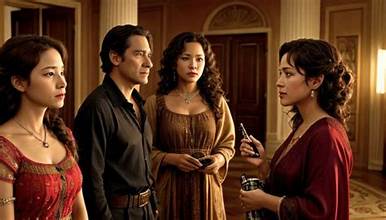
Introduction
Cinema is more than entertainment. It is a mirror that reflects society’s values, struggles, and dreams. For over a century, movies have shaped how people think, behave, and perceive the world. They have influenced fashion, politics, relationships, and even language.
From the early days of silent films to today’s global blockbusters, cinema has remained one of the most powerful cultural forces in human history. This article explores how movies influence culture and society, examining their impact on identity, emotion, politics, and the global imagination.
The Birth of Cinema and Its Cultural Role
Cinema was born in the late 19th century when inventors like Thomas Edison and the Lumière Brothers introduced moving pictures to the world. The first screenings were short, silent, and simple—workers leaving a factory, trains arriving at stations. Yet, people were mesmerized.
By the 1920s, films evolved into a storytelling art form. Silent movie stars like Charlie Chaplin and Buster Keaton made audiences laugh, cry, and think. These early films connected people from different cultures through universal emotions, laying the foundation for cinema as a global language.
Movies soon became more than stories—they became cultural events. They offered escape during hard times and hope during wars. They gave society heroes to look up to and villains to hate.
Cinema as a Reflection of Society
Movies are often mirrors of their times. They capture the spirit, fears, and desires of each generation. For example:
- In the 1930s, during the Great Depression, films like Gone with the Wind (1939) offered escapism and grandeur.
- The 1950s saw movies exploring post-war optimism and family life, like Singin’ in the Rain (1952).
- The 1970s introduced antiheroes and political cynicism in films such as Taxi Driver (1976) and The Godfather (1972), reflecting disillusionment after the Vietnam War.
- Modern films like Parasite (2019) and Joker (2019) explore inequality and mental health, echoing the frustrations of today’s society.
Cinema evolves with people. When social values change—so do the stories.
Shaping Public Opinion and Social Change
Movies don’t just reflect society—they influence it. They can challenge stereotypes, spark debates, and inspire revolutions.
During the Civil Rights Movement in America, films like Guess Who’s Coming to Dinner (1967) addressed racial prejudice. In India, Rang De Basanti (2006) motivated youth to question corruption and fight for justice. In Iran, A Separation (2011) exposed gender and class struggles, giving international audiences insight into Iranian society.
Films often become tools of social awareness. Documentaries like An Inconvenient Truth (2006) raised global concern about climate change. Similarly, movies about mental health (A Beautiful Mind, Silver Linings Playbook) and LGBTQ+ stories (Brokeback Mountain, Call Me by Your Name) have helped normalize important conversations that were once taboo.
Cinema can start movements, change policies, and alter the course of history—because emotions move people more than facts ever could.
Cinema and Identity
Movies play a huge role in shaping personal and national identity. For many, cinema is the first window into different cultures, lifestyles, and worldviews.
Hollywood, Bollywood, and other film industries project their countries’ identities globally. American cinema, for example, often emphasizes individualism, freedom, and ambition. Bollywood celebrates love, family, and emotional drama. Korean and Japanese films explore discipline, community, and modern alienation.
For diasporas—people living away from their homeland—films become a bridge to cultural roots. Watching a movie in one’s native language or about familiar traditions creates a sense of belonging and pride.
Representation also matters. When marginalized communities see themselves portrayed positively on screen, it boosts self-worth and challenges prejudice. The success of Black Panther (2018) and Crazy Rich Asians (2018) proved that diverse stories can also be commercially successful.
Fashion, Language, and Lifestyle Influence
Cinema’s influence extends far beyond the theater—it seeps into everyday life.
Movies set fashion trends and define beauty standards. Audrey Hepburn’s iconic black dress in Breakfast at Tiffany’s and Shah Rukh Khan’s casual charm in Dilwale Dulhania Le Jayenge shaped fashion across generations.
Language, too, has been deeply influenced. Movie quotes become part of everyday speech—lines like “May the Force be with you” (Star Wars) or “I’ll be back” (Terminator) are recognized globally. In India, dialogues like “Mogambo khush hua!” or “Don’t underestimate the power of a common man!” have become cultural expressions.
Even food habits and tourism are influenced by cinema. After Eat Pray Love (2010), tourism in Bali surged. Harry Potter turned King’s Cross Station into a global landmark.
The Emotional Power of Movies
Cinema is one of the few art forms that can evoke a full range of emotions—joy, fear, sadness, love, hope—within a few hours. This emotional connection makes movies powerful tools of empathy.
A film can make people cry for someone they’ve never met or understand a culture they’ve never experienced. Movies like Life is Beautiful (1997) and Schindler’s List (1993) humanize history, making audiences feel the pain and hope of war survivors.
Psychologists even use films in therapy, a practice known as cinematherapy, where watching specific movies helps patients process emotions and trauma.
Leave a Reply